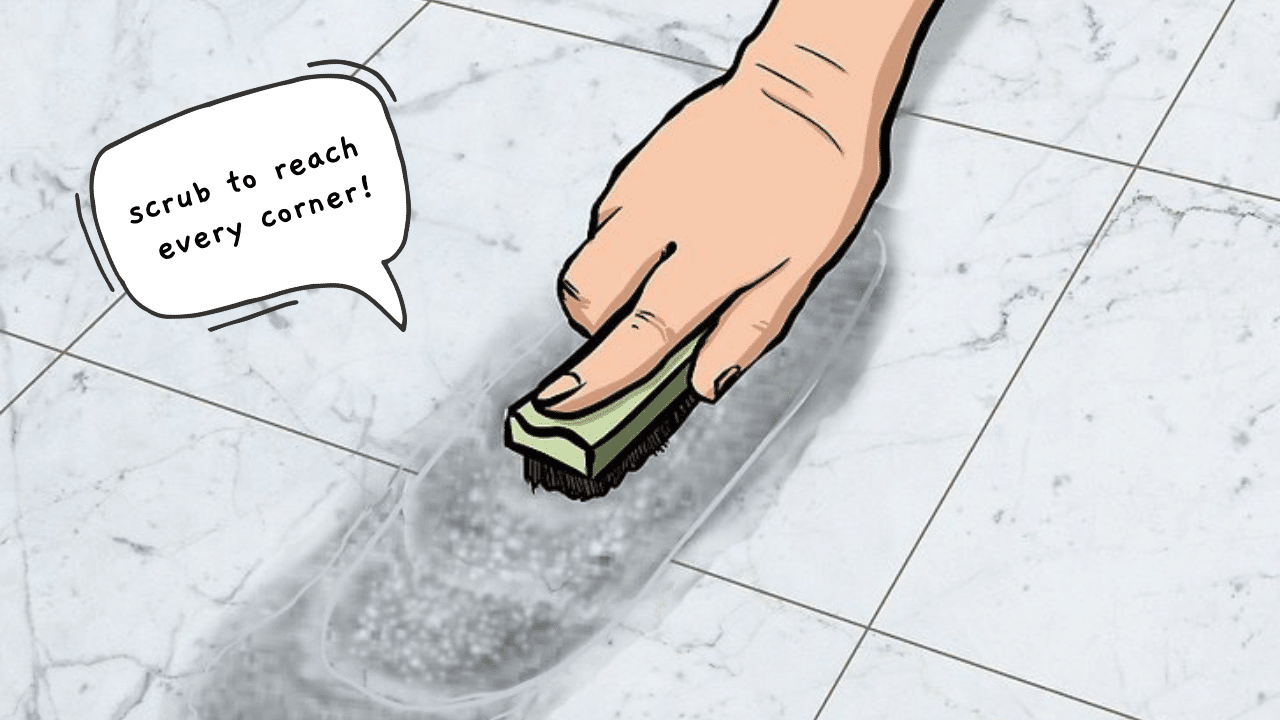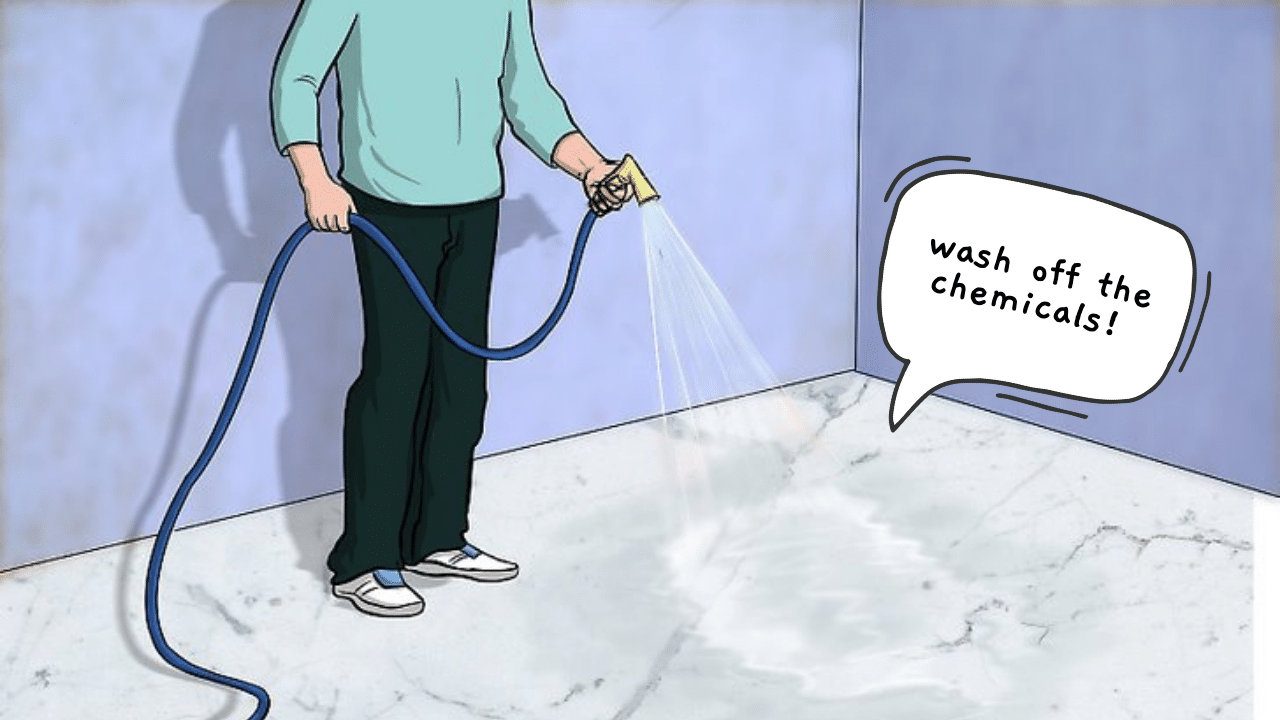Sometimes you can use a power washer to clean something that has been stained and left in the rain for years. However, pressure washing is not always the best way to clean your concrete patios, with the concrete being damaged from the water pressure, which means you need alternative ways to clean.
You must apply a cleaning chemical to your concrete patio that will kill algae and mold growing on the patio. After applying the cleaning chemicals, you should brush the entire patio with a broom or a brush, washing off the chemicals with a hose to clean the entire patio.
We always recommend that you fully understand how to clean your concrete patio without damaging it. The most powerful solutions can often cause the concrete of your patio to be damaged, requiring that you spend even more to help your patio stay perfect. (Related article: Everything You Need To Know When Building A Patio)
What is the Best Way to Clean a Concrete Patio?
The steps to keeping your concrete patio as clean as possible when you don't want to use a pressure washer are not always as easy as they may seem on a label. Every chemical cleaner you can use has a different set of steps and requirements that you will have to be familiar with.
Fortunately, we have got the four basic steps down to cleaning your patio, each of which can be followed no matter what you are using. However, we recommend using waterproof shoes and gloves when you are planning on using some of the stronger chemical cleaners on the market.
1. Soaking the Concrete Patio
This is the first step, the soaking of the concrete patio to ensure that it is clean; often, the concrete patio has things growing on it instead of stains. You will have to soak the entire patio in your cleaning, using a sprayer that can comfortably reach every patio spot to soak it.
Doing so will have the chemical start to kill the algae and mold, most likely causing the concrete to look dirty. Using a strong chemical will ensure that you can properly clean every part of the concrete patio without resorting to extreme pressure.
2. Scrubbing the Concrete Patio
While chemical cleaners are quite good at killing everything that is causing your concrete patio to look dirty, it has its limits. You will have to use a hard-bristled broom to scrub every corner of your concrete patio; this ensures that nothing is missed and that the chemicals are reaching every corner.

We recommend doing this thoroughly no matter what chemicals you are using, as there will often not be an even spread when you are just spraying. Even a light scrubbing with a broom will ensure that the chemical cleaner reaches every possible area of your patio.
3. Hosing off the Concrete Patio
The chemicals that you are using to clean the concrete patio need to be washed off; however, these chemicals are usually safe for the environment, unlike with oils and other things. This is because they have been specifically made to be absorbed by soil and plants, only harming algae and mold.

This means that you can use your broom and a hose to clean off every part of the concrete patio. Easily clean it while seeing which areas may need to be cleaned with more elbow grease to get the trapped dirt out.
4. Leaving Everything to Dry then Sweeping
People often forget to do this, allowing the concrete patio to be hosed off and effectively sweeping away everything. However, we recommend that you wait for everything to dry out and then sweep the entire patio again to properly clean.
Sweeping the patio once it dries ensures that all the dead algae, plants, sand, and anything else left are not simply lying around on the patio. Regularly sweeping the concrete patio will prevent sand, dust, algae, and mold from accumulating as well.
Will Bleach Harm Your Concrete Patio?
No, bleach will not harm the concrete surface of your patio and will, in fact, perfectly disinfect it, helping to remove stains and spots. Diluting the bleach in water will help spread it further without running the risk of causing a negative chemical reaction.
However, it should be noted that when using bleach, there is a high chance that you can kill the grass around the patio and the plants. Bleach is made out of chlorine, a chemical that is deadly to all living organisms, including your plants.
Further, we do not recommend mixing bleach with any other chemicals, it will usually be safe, but you only need to accidentally mix it with something that has ammonia to make a deadly gas. Bleach is a pure chemical that should only ever be used on its own and as your last resort.
Will Baking Soda and Vinegar Clean a Concrete Patio?
If you are looking for an extremely strong natural cleaner, we recommend that you mix vinegar and baking soda. However, depending on the size of your concrete patio, it may be much more expensive to use this than using other chemicals.
Baking soda and vinegar have a violent bubbling reaction that easily kills most growths while allowing easy scrubbing. You will have to scrub your concrete patio when using this mixture as it does not simply allow you to rinse the mixture off and have a magically cleaned concrete patio.
The best part and the main reason many people prefer to use baking soda and vinegar is that the mixture is not harmful. It can be washed away into the drains or the lawn without having to stress about the damage that might be done to plants, animals, or piping.
What is the Best Chemical to Clean Concrete Patio?
The best household chemical to use for cleaning your concrete patio is the purest bleach that you can find. We recommend that you use a heavy-duty mold and mildew remover if you want to buy a chemical made for cleaning concrete, with several brands making specific mixtures.
However, it should be noted that your options will change heavily depending on where you buy the chemicals and your needs. Choosing a cleaner that fits your specific needs will always yield the best possible results, as every concrete patio is different.
Not only will the mixture of the concrete change how things are growing on the patio, the location it is in, and the shape of the patio. These things will affect how dirty the concrete patio is, what is growing on it, and what will work best to get the patio as clean as possible.
Conclusion
Your concrete patio may never be as clean as when it was first made; however, it can be kept clean with chemicals, scrubbing, and water. You should remember that some mold and algae growth is often considered part of the look that a concrete patio should have.
Remember, the concrete will naturally age and have a few stains; these are to be loved, not washed!

